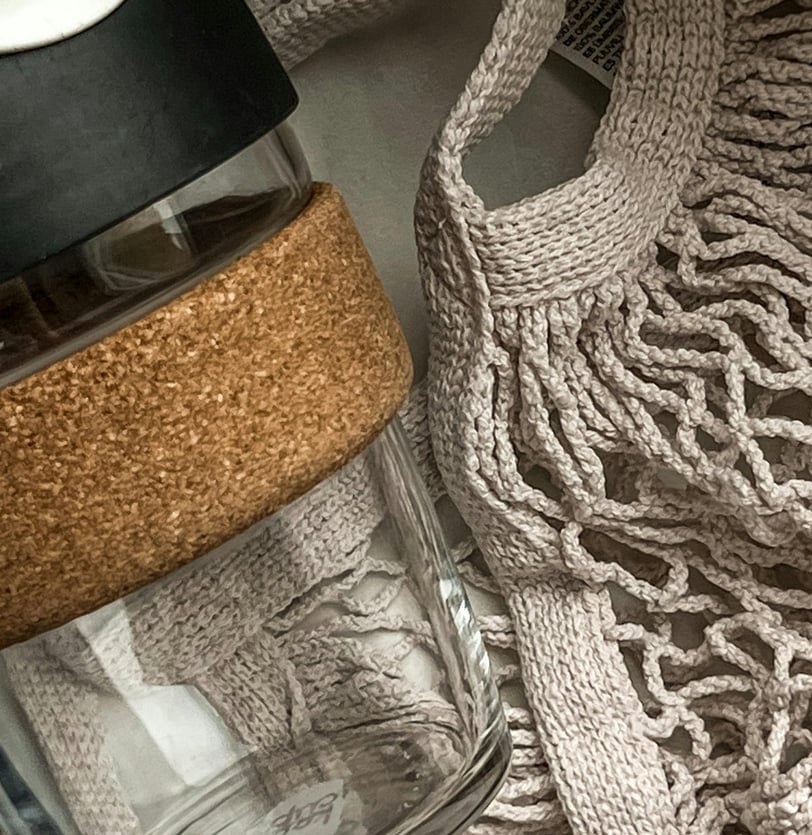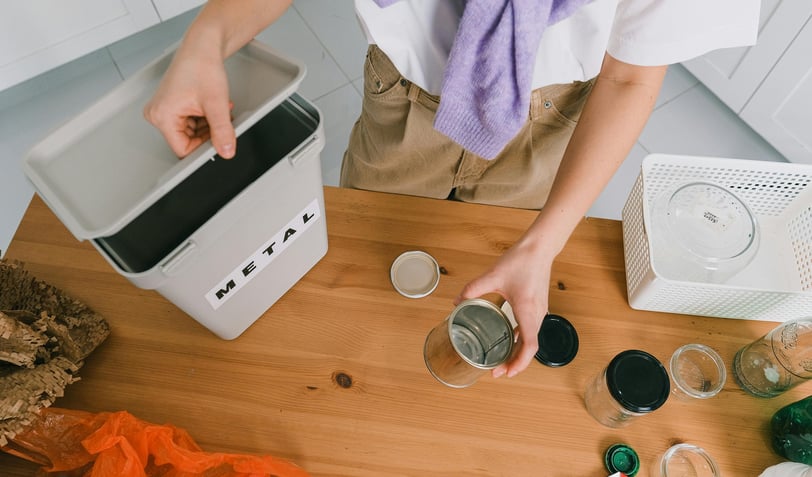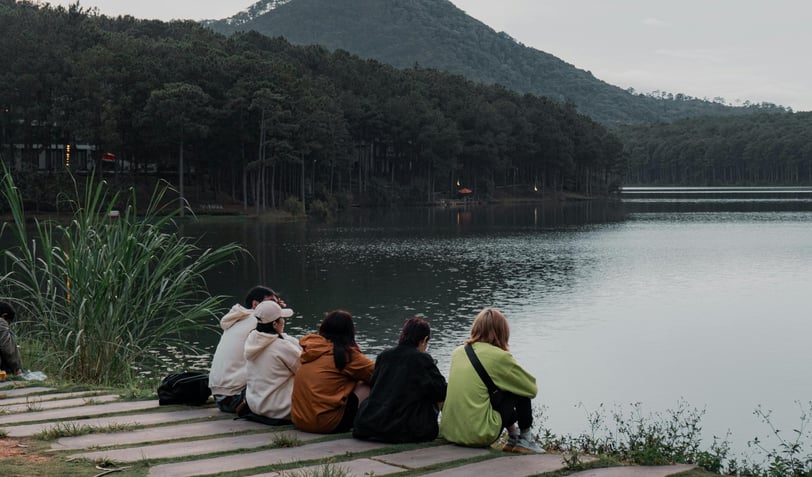5-Minute Eco-Habits: The Busy Professional’s Guide to a Sustainable Life
Discover 5-minute eco-habits that busy professionals can easily integrate into their day to boost sustainability without extra effort. Learn quick, impactful tips for a greener lifestyle.
SUSTAINABLE LIVINGNEW IN


In today’s fast-paced world, sustainability might feel overwhelming—but it doesn’t have to be! Making eco-friendly choices can fit easily into your routine with just a few minutes each day. Here, discover impactful 5-minute eco-habits that require minimal time and effort but can have a lasting impact. Whether you're working remotely or commuting to the office, these practical tips are designed for busy professionals like you, allowing you to lead a green lifestyle without compromising productivity.
Why 5-Minute Eco-Habits Work for Busy Professionals
Sustainability often gets written off as time-consuming or hard to maintain. But creating a greener lifestyle is more about consistent, intentional habits than big, disruptive changes. Micro-habits—actions that take five minutes or less—can seamlessly become part of your daily routine, empowering you to reduce your impact with minimal effort.
Did you know? Studies show that small, regular changes in daily habits lead to long-term sustainability, underscoring that even minor adjustments can contribute to environmental conservation.
1. Energy Efficiency: Simple Power-Saving Habits
Reducing your carbon footprint doesn’t require hours of planning. Here are some quick ways to save energy that I've found easy to adopt in my routine:
Use Smart Power Strips: Plug your electronics into a smart power strip that can be turned off with one click when you leave the room. This small action cuts down on “phantom” energy use, saving electricity and reducing costs.
Switch to Dark Mode: On your computer and phone, switching to dark mode can save battery power on devices, reducing energy consumption over time. It’s also easier on the eyes, which can help if you work long hours on a screen.
Adjust Thermostat by 1-2 Degrees: Adjusting your thermostat up in summer or down in winter by just 1-2 degrees takes seconds but can have a lasting impact on energy bills and consumption.
When I first switched my phone and laptop to dark mode, I didn't expect to see any major difference. However, at the end of the month, I was pleasantly surprised to notice my energy bill dropped by nearly 8%. This small tweak made a big impact, and I now make it a point to adjust my thermostat slightly each season—it’s saved me time and money. Small adjustments like this, along with setting reminders to power down devices, add up over time. Try setting a timer now to remind yourself to power down unused devices at lunch or bedtime. It becomes automatic before long.
⏱ Time Required: 1-2 minutes each.


2. Quick Waste Reduction Hacks for Work and Home
Did you know that cluttered cloud storage or an overloaded inbox can actually consume energy? Keeping digital spaces organized and clean isn’t just about productivity; it’s also eco-friendly! Here are quick tips you can integrate into your routine right now:
Set Up a “Reusable Bag Station”: Keep a stash of reusable bags near the door or in your car for easy access. This simple setup eliminates the need for plastic bags on grocery runs or errands.
Digital Declutter: Organize or delete unnecessary files and emails. Data storage consumes energy, and minimizing your digital footprint can save energy on cloud storage and reduce clutter.
Bring a Reusable Kit to the Office: Keep a small set of reusable utensils, a straw, and a collapsible cup in your bag or office drawer for quick, plastic-free lunch breaks.
For my digital life, I use Friday afternoons to clean up my digital workspace. By clearing out unneeded files and unsubscribing from spam, I have minimized digital waste and improved my work efficiency. You can try it out! Just create a “Declutter Day” and pick one day a week to organize files, reduce unnecessary cloud storage or just clean out old emails. Then delete 10 unneeded emails right now and see how it instantly reduces digital clutter! For more tips on productive decluttering, check out 10 Micro-Habits That Transformed My Productivity in Just 30 Days.
⏱ Time Required: 3-5 minutes total.


3. Eco-Friendly Commuting: Make Every Mile Count
Commuting doesn’t have to feel wasteful. By making just a few changes, you can turn it into a sustainable part of your day:
Plan a Carpool Day Once a Week: If you drive, team up with a colleague who lives nearby. Even one day a week can reduce fuel consumption and emissions while giving you a chance to connect.
Cycle or Walk Short Distances: For errands within a mile or two, opt for walking or biking instead. It’s a chance to fit in some movement during a busy day and reduces reliance on cars.
Take Public Transport Mindfully: Consider using public transport over driving solo. Using this time productively—catching up on reading or relaxing—also makes it a valuable part of your day.
One day, a colleague and I decided to carpool as an experiment. Not only did we save on fuel, but we also turned our commute into a mini-brainstorming session. Since then, it’s become a weekly ritual that we both look forward to. If you walk or cycle, try using a carbon footprint app to see the impact in real time—it’s a motivating way to visualize your positive effect. Arrange with a colleague to carpool next week and see how it transforms your commute.
⏱ Time Required: 1-5 minutes each time.


4. Digital Minimalism: Small Changes, Big Impact
Our digital habits are often overlooked in sustainability conversations, yet they consume energy and contribute to environmental impact. Here’s how to digitalize sustainably:
Set Device Sleep Timers: Adjust your phone, laptop, and other devices to sleep mode after a few minutes of inactivity. This simple tweak reduces energy consumption throughout the day.
Unsubscribe and Declutter: Take a moment to unsubscribe from newsletters you no longer read. This reduces data storage demands and simplifies your inbox.
Eco-Friendly File Organization: Spend a few minutes organizing or archiving your digital files each week. Reducing digital clutter makes accessing files easier and minimizes your digital footprint.
After unsubscribing from dozens of unnecessary emails, I realized how much calmer my inbox felt. Now, I unsubscribe as soon as I notice spam, keeping my inbox manageable and more eco-friendly. You can try it out yourself right now! Unsubscribe from three newsletters you don’t read to declutter your inbox. For eco-conscious file storage, switch to cloud storage providers that prioritize renewable energy or have eco-friendly certifications.
⏱ Time Required: 2-3 minutes per task.


5. Build Sustainable Habits Through Habit Stacking
Busy schedules don’t leave a lot of time to add new habits. But with habit stacking—the practice of pairing a new habit with an existing one—you can build sustainable routines without extra effort. Here’s how:
Morning Coffee Ritual: While brewing your morning coffee, set aside used coffee grounds for composting. It’s a small step toward zero waste that you can easily add to your routine.
Evening Wind-Down: As part of your nightly skincare or winding-down routine, opt for reusable makeup remover pads or facecloths instead of disposable ones. It’s a sustainable choice you can incorporate effortlessly.
Lunch Break Watering: Keep a small plant at your desk and water it during your lunch break. It’s a quick, satisfying task that adds a touch of green to your workspace and keeps the air fresh.
Every morning, when I make coffee I automatically add the used coffee grounds to my compost. It's such a satisfying habit that I don’t even think about it anymore!
⏱ Time Required: 1-2 minutes each habit.


6. Sustainable Weekend Projects for Busy Professionals
For busy professionals, weekends are the best time to take on small eco-friendly projects that you may not have time for during the week. Here are a few ideas:
Eco-Bins Setup: Take a few minutes to set up bins for recycling, compost, and donations in your home. Having these bins ready to go makes sustainable sorting easier and helps you keep a clutter-free home.
Meal Prep with Local Produce: Dedicate 15-20 minutes to a quick local produce shopping trip and meal prep. Buying local not only supports community farmers but also reduces carbon footprint by minimizing long-haul food transport.
Nature Break: Plan a short nature walk or bike ride. It’s a low-effort way to connect with nature, de-stress, and support physical health.
Setting up dedicated recycling bins was a small project I tackled on a Saturday. Not only did it make my home feel more organized, but it also made recycling almost effortless for me and my family. Designate a specific weekend each month to check your pantry for locally sourced produce, and see how much it reduces packaging waste.
⏱ Time Required: Minimal weekend commitment.


Putting It All Together for a Greener, More Manageable Lifestyle
Incorporating these 5-minute eco-habits doesn’t have to disrupt your busy schedule. By embedding small changes into your routine—like energy-saving tweaks, zero-waste swaps, or eco-friendly commuting—you can make a real impact over time. Remember, sustainability is a journey, and every small step counts. With these micro-habits, you’re not only making a difference but also setting a positive example for others around you.
Key Takeaways
Consistency Over Perfection: Small, regular actions make a lasting impact.
Access is Key: Keep eco-tools like reusable bags or eco-bins within easy reach.
Habit Stacking Saves Time: Pairing eco-friendly habits with daily routines makes sustainability seamless.
Digital Decluttering Boosts Productivity: Reducing digital clutter is eco-friendly and simplifies daily tasks.
Sustainable Commuting Adds Up: Even a weekly carpool or bike trip reduces emissions.
Q&As
What are “5-minute eco-habits” for busy professionals?
5-minute eco-habits are small, sustainable actions that take five minutes or less to complete and can be easily integrated into a busy professional’s daily routine. Examples include switching devices to dark mode, reducing digital clutter, and using reusable items. These simple habits promote an eco-friendly lifestyle without requiring significant time or effort.
How can I reduce my energy consumption while working from home?
You can make your workspace more energy-efficient with small adjustments: switch your devices to dark mode, use smart power strips to eliminate “phantom” energy use, and adjust your thermostat by 1-2 degrees. These easy tweaks take just minutes and can lower your carbon footprint and energy bills.
Can eco-friendly commuting really make a difference?
Yes! Choosing eco-friendly commuting options, like carpooling, biking, or public transit, even just once a week, can significantly reduce emissions. Pairing these options with productivity habits, like listening to podcasts during your commute, can make this time valuable as well as eco-friendly.
What are some quick ways to reduce waste at work?
For quick waste reduction, try keeping reusable utensils, bags, and a collapsible cup handy. You can also declutter your digital files, as reducing digital “waste” helps save energy on cloud storage. Small steps like these help reduce both physical and digital waste.
How can I build eco-friendly habits without adding to my schedule?
One effective method is “habit stacking,” where you pair a new eco-friendly habit with an existing routine. For example, while brewing coffee, you could set aside used grounds for composting, or water your office plant during your lunch break. These micro-habits blend seamlessly into your routine.
What are some eco-friendly weekend projects for beginners?
For a low-effort sustainable project, try setting up separate bins for recycling and composting, which can simplify waste sorting at home. You can also take a quick trip to buy local produce or plan a short nature walk to reconnect with the environment.










